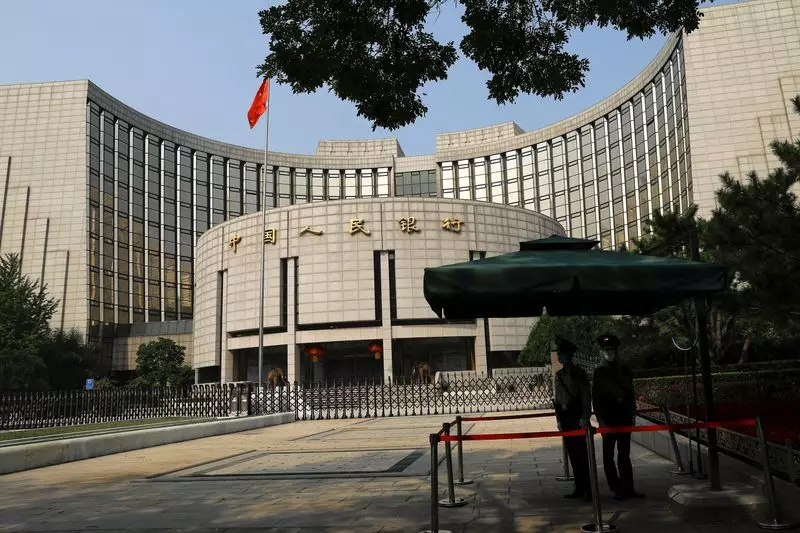In the wake of a dynamically evolving economic landscape, China’s central bank—the People’s Bank of China (PBOC)—has hinted at a paradigm shift regarding its interest rate policy. According to a recent report by the Financial Times, the PBOC anticipates the possibility of cutting interest rates from the current 1.5% at an appropriate juncture in 2025. This movement towards a more responsive and market-driven rate structure is emblematic of broader governmental efforts aimed at recalibrating the economy’s reliance on state-directed bank lending.
The PBOC’s proactive stance underscores a commitment made last year to improve the flexibility of China’s monetary policy framework. Rather than enforcing rigid quantitative targets for loan growth, the bank is now poised to prioritize interest rate adjustments, demonstrating a pivotal shift in its operational methodology. This transition comes as part of a calculated response to ensure that credit demand aligns more closely with monetary policy changes, prompting analysts to anticipate further adjustments in the current fiscal year.
The decision to gradually phase out quantitative lending goals dovetails with the PBOC’s acknowledgement of the need to transition toward a system that fosters higher-quality economic development. In recent years, the reliance on quantitative targets has been increasingly viewed as misaligned with the evolving needs of the economy. The bank’s new approach seeks to enhance the formation and transmission of market-driven interest rates, thereby fostering a financial climate conducive to sustainable growth.
The implications of this reform are significant: By freeing interest rates from state-directed limits, the PBOC aspires to nurture a financial system that incentivizes responsible lending, which in turn may bolster private sector investment. However, this ambitious transformation has been dubbed “an arduous task” by government advisors, reflecting the challenges that lie ahead in nurturing a more resilient and capable financial ecosystem.
The backdrop to these interest rate recalibrations is an economy grappling with multifaceted pressures, including potential trade tensions. Recent financial market activities indicate a growing anticipation for further monetary easing as both the 10-year and 30-year treasury yields reached record lows, aligning with the expectations set by the central bank’s impending reforms. The economy’s principal rate, the seven-day reverse repo rate, witnessed its most recent adjustment from 1.7% to 1.5% this past September, a clear signal of the PBOC’s intentions to adapt to shifting economic dynamics.
China’s recent economic performance has exposed vulnerabilities, primarily characterized by an over-dependence on manufacturing and export. Anemic household consumption prompted by a property market crisis has diminished consumer wealth, stifling domestic demand. As infrastructure projects receive undue attention, the imperative for a more balanced fiscal stimulus becomes glaringly evident. Analysts predict that the continuous reliance on government-led stimulus must yield to a more holistic approach that fosters consumer-based economic growth.
The Road Ahead: Policy Coordination and Economic Resilience
To effectively navigate this transition, concerted efforts at policy coordination will be indispensable. In a strategic meeting held last December, China’s leadership committed to enacting timely interest rate cuts and reducing reserve capital requirements for banks. This initiative represents a paradigm shift in economic governance, one that aims to invigorate lending and stimulate investment in a flagging economy.
Further complicating the landscape, the anticipated return of Donald Trump to the White House introduces renewed uncertainty regarding U.S.-China trade relations—an external risk factor that could hinder China’s path towards recovery.
Despite these challenges, government advisors remain cautiously optimistic, urging for an unchanged growth target while advocating for proactive fiscal measures to rejuvenate depressed domestic demand. The PBOC’s commitment to recalibrating interest rate structures is indicative of a broader vision, one that seeks to reshape China’s economy into a more sustainable and resilient entity, capable of withstanding future global economic fluctuations.
As the People’s Bank of China embarks on this reformative journey, the success of these policies will ultimately hinge on the delicate balance between market responsiveness and structural integrity. The financial framework emerging from these changes will not only define the trajectory of China’s economic recovery but will also serve as a blueprint for future monetary policy in an increasingly complex global economy.

